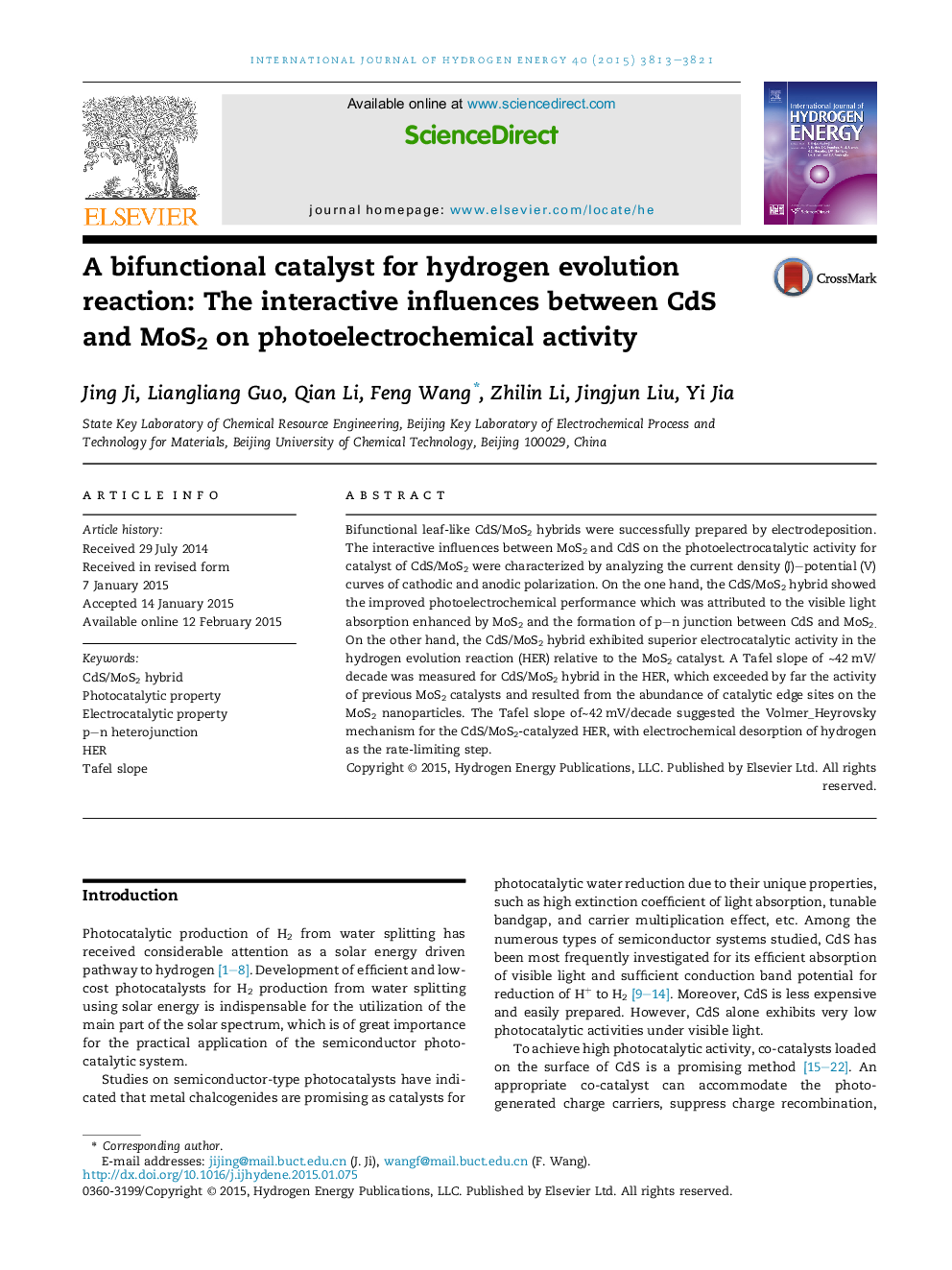| Article ID | Journal | Published Year | Pages | File Type |
|---|---|---|---|---|
| 1275808 | International Journal of Hydrogen Energy | 2015 | 9 Pages |
•Bifunctional leaf-like CdS/MoS2 hybrids were prepared by electrodeposition.•The interactive influence of MoS2 and CdS on the catalytic activity was analyzed.•The CdS/MoS2 showed the improved photocatalytic activity due to the p–n junction.•The CdS/MoS2 has superior electrocatalytic activity for HER relative to the MoS2.•A Tafel slope of ∼42 mV/decade was measured for CdS/MoS2 hybrid in the HER.
Bifunctional leaf-like CdS/MoS2 hybrids were successfully prepared by electrodeposition. The interactive influences between MoS2 and CdS on the photoelectrocatalytic activity for catalyst of CdS/MoS2 were characterized by analyzing the current density (J)–potential (V) curves of cathodic and anodic polarization. On the one hand, the CdS/MoS2 hybrid showed the improved photoelectrochemical performance which was attributed to the visible light absorption enhanced by MoS2 and the formation of p–n junction between CdS and MoS2. On the other hand, the CdS/MoS2 hybrid exhibited superior electrocatalytic activity in the hydrogen evolution reaction (HER) relative to the MoS2 catalyst. A Tafel slope of ∼42 mV/decade was measured for CdS/MoS2 hybrid in the HER, which exceeded by far the activity of previous MoS2 catalysts and resulted from the abundance of catalytic edge sites on the MoS2 nanoparticles. The Tafel slope of∼42 mV/decade suggested the Volmer_Heyrovsky mechanism for the CdS/MoS2-catalyzed HER, with electrochemical desorption of hydrogen as the rate-limiting step.
